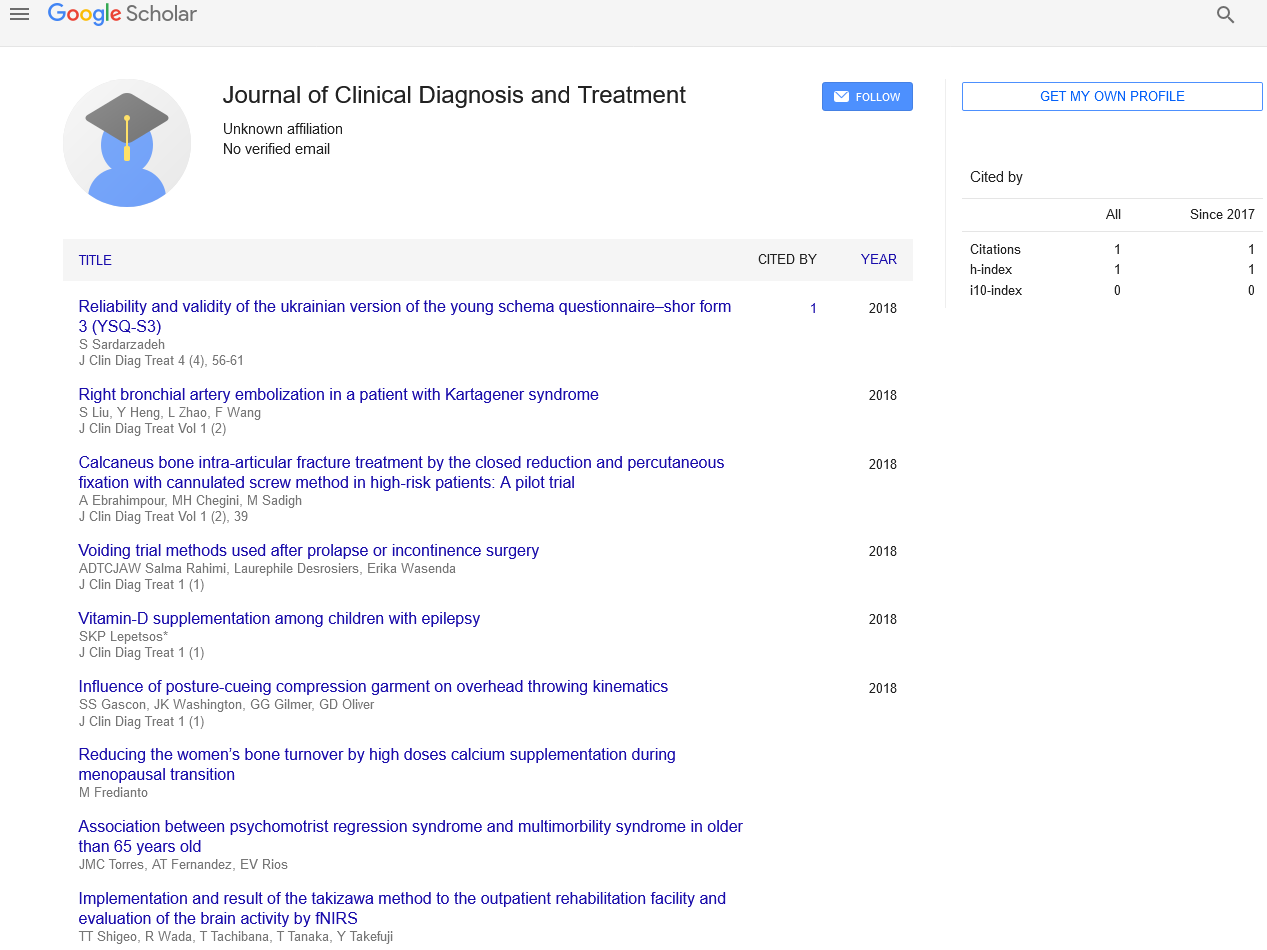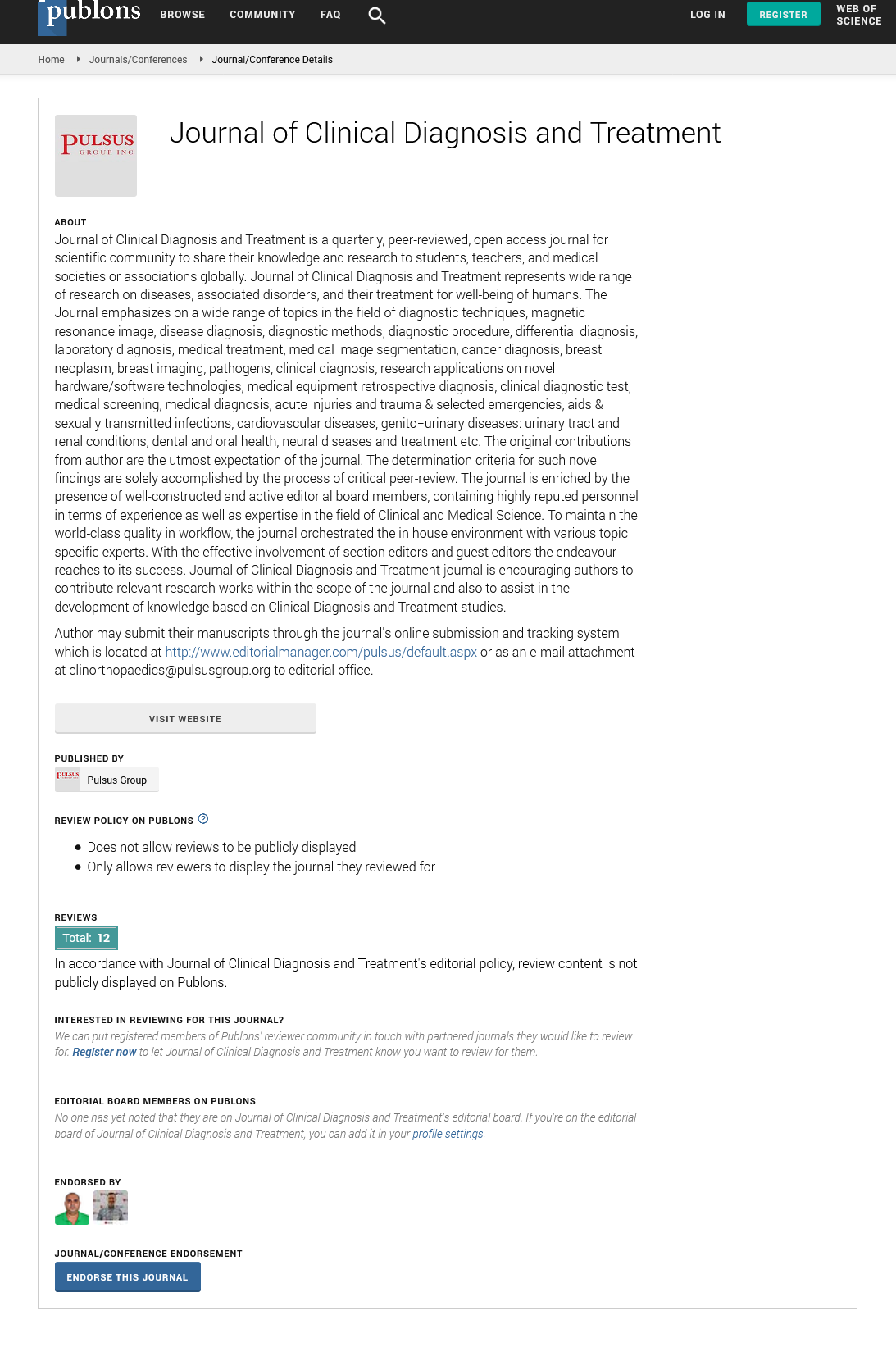Neural diseases : Test and Procedures
Received: 03-Jul-2022, Manuscript No. puljcdt-22-5438; Editor assigned: 05-Jul-2022, Pre QC No. puljcdt-22-5438(PQ); Accepted Date: Jul 23, 2022; Reviewed: 12-Jul-2022 QC No. puljcdt-22-5438(Q); Revised: 21-Jul-2022, Manuscript No. puljcdt-22-5438(R); Published: 27-Jul-2022, DOI: 10.37532/puljcdt.22.4(4).7-8
Citation: Macy E. Neural Diseases: Test and procedures. J Clin. Diagn. treat. 2022; 4(4)7-8.
This open-access article is distributed under the terms of the Creative Commons Attribution Non-Commercial License (CC BY-NC) (http://creativecommons.org/licenses/by-nc/4.0/), which permits reuse, distribution and reproduction of the article, provided that the original work is properly cited and the reuse is restricted to noncommercial purposes. For commercial reuse, contact reprints@pulsus.com
Abstract
According to medical terminology, neurological disorders are conditions that affect the spinal cord, brain, and body's nerves. A variety of symptoms can be caused by structural, metabolic, or electrical abnormalities in the brain, spinal cord, or other nerves.Paralysis, weak muscles, shaky coordination, loss of feeling, convulsions, confusion, pain, and altered degrees of consciousness are a few symptoms.
Key Words
Neurological disorders; Convulsions; Neuropsychology; Huntington's disease
Introduction
Any nervous system disorder is a neurological disorder. A variety of symptoms can be caused by structural, metabolic, or electrical abnormalities in the brain, spinal cord, or other nerves. Paralysis, weak muscles, shaky coordination, loss of feeling, convulsions, confusion, pain, and altered degrees of consciousness are a few symptoms. There are numerous known neurological illnesses, some of which are rare but many of which are not. They may be evaluated neurologically, and investigated and treated within the fields of clinical neuropsychology and neurology.
The nervous system is made up of the brain, spinal cord, and nerves. Together, they have complete control over the body's functions. You may experience difficulties with your nervous system's functioning if you have issues moving, speaking, swallowing, breathing, or learning. Additionally, you can experience issues with your memory, perceptions, or emotions.
Major types consist of:
1) Diseases like Huntington's disease and muscular dystrophy that are brought on by defective genes
2) Developmental issues with the neurological system, such as spina bifida
3) Degenerative illnesses, such as Parkinson's disease and Alzheimer's disease, in which nerve cells are harmed or die
4) Strokes and other blood vessel diseases that affect the brain's blood supply
5) Brain and spinal cord injuries
6) Diseases of seizures, such as epilepsy
7) Such as brain tumors, cancer.
Numerous conditions fall under the category of neurological disability, including epilepsy, learning difficulties, neuromuscular disorders, autism, attention deficit disorder (ADD), brain tumours, and cerebral palsy, to name a few. Congenital neurological conditions are those that exist from conception. Tumors, ageing, injuries, infections, or structural flaws may be the cause of other disorders. All neurological disabilities are the outcome of injury to the nervous system, regardless of the source. How much communication, vision, hearing, movement, and cognition are affected depends on where the injury occurs.
Almost every element of our health and wellbeing is influenced by the neurological system. It directs simple processes like waking up, automatic ones like breathing, and intricate ones like thinking, reading, remembering, and experiencing emotions. Despite being protected by strong membranes, housed in the skull and spinal vertebrae, and chemically separated by the blood-brain barrier, the brain and spinal cord are extremely vulnerable if damaged. Although they frequently lay far beneath the surface, nerves are nonetheless susceptible to injury. Electrochemical and structural disturbance can affect individual neurons as well as the brain circuits and nerves they form. Although neuroregeneration is regarded to be uncommon in the brain and spinal cord, it may happen in the peripheral nervous system and help heal or partially mask lesions.
Test and Procedures
Medical professionals use diagnostic methods and tests to confirm or rule out neurological disorders and other conditions. A century ago, doing an autopsy on a deceased person was the only way to definitively diagnose many neurological illnesses. Scientists can now evaluate the living brain and observe nervous system activity as it happens thanks to new tools and methods. Doctors may now more accurately identify illnesses and assess how well a certain therapy is working thanks to powerful and precise instruments.
Doctors may use laboratory screening tests on blood, urine, or other bodily fluids to diagnose illness, gauge the severity of the illness, and track the effects of therapeutic medications. Some tests, which the doctor orders as part of a routine checkup, give general information, while others are designed to pinpoint specific health issues.
If a person has a history of a neurological ailment in their family, genetic testing can be used to find out if they carry the gene known to be responsible for the condition. Patients or the parents of children undergoing genetic testing may be advised to seek genetic counselling to better understand the significance of the tests and possible outcomes. A laboratory that has been accredited for clinical testing should conduct genetic testing that is utilized for diagnosis or therapy.
The diagnosis of malignancies, blood vessel abnormalities, stroke, traumas, aberrant brain development, and brain bleeding is done using a variety of imaging modalities, including brain scans. Computed tomography (CT), magnetic resonance imaging (MRI), positron emission tomography (PET), and single proton emission (SPECT) scans are a few examples of brain scan types.
Neurological examination
A neurological exam evaluates hearing, speech, vision, coordination, and balance as well as motor and sensory abilities. It might also evaluate your mood, behavior, and mental health. A tuning fork, flashlight, reflex hammer, and an instrument for looking into the eye are used during the examination. The outcomes of the neurological examination and the patient's medical history are combined to create a differential diagnosis, which aids in deciding which additional diagnostic procedures and tests are required.
Prevention
The best defence against neurological illnesses involves both boosting brain health and reducing risk factors. This is defined as "A condition of complete physical, mental, and social wellbeing through a full, balanced, ongoing development and exercise of the brain" rather than just the absence of disease.






